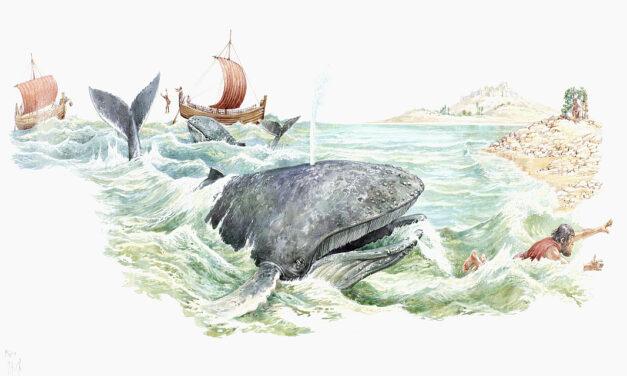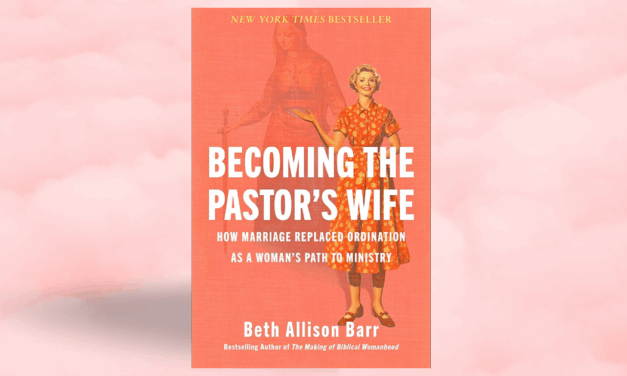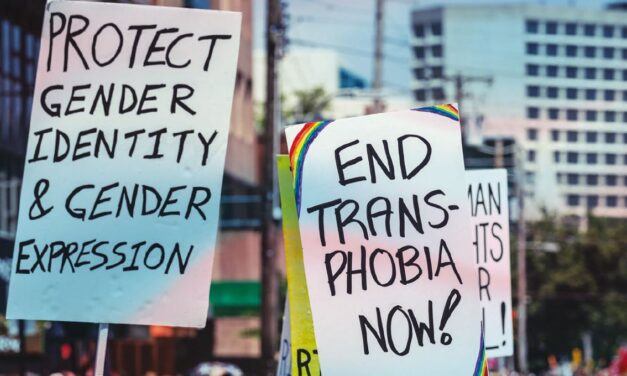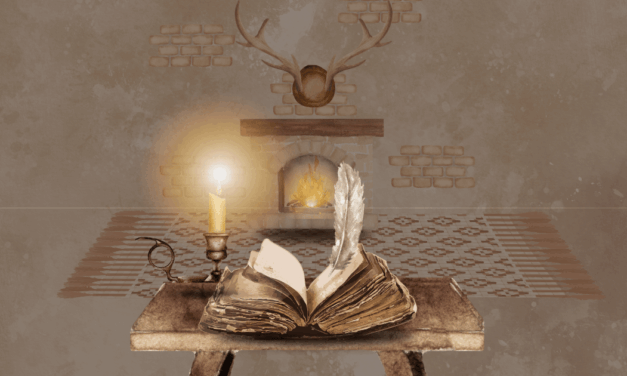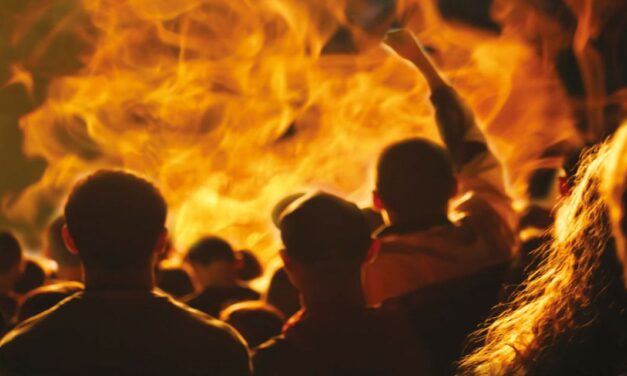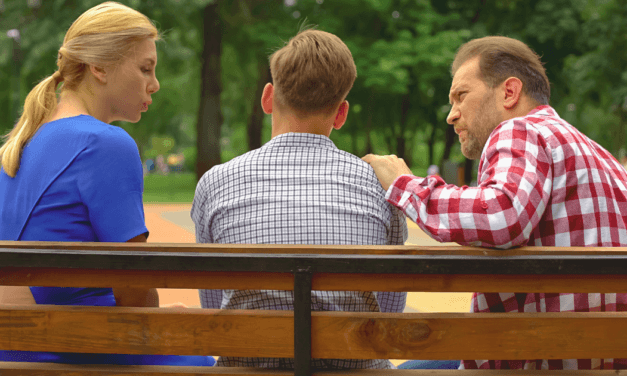This article first appeared in the Christian Research Journal, volume 25, number 4 (2003). For more information about the Christian Research Journal, click here.
SYNOPSIS
Primitive cultures are often portrayed in books and the media as a sort of “Eden,” in which noble savages live in harmony with one another and nature. Shamanism, a form of spiritism practiced by primitive cultures around the world, is viewed by many academics, postmodernists, and New Agers as a purer form of spirituality, uncorrupted by Western academia and religion. Missionary efforts to convert primitive cultures are viewed as corrupting and arrogant. Are these views correct? Many answer yes. The primitive people themselves might say otherwise if they were asked. Shoefoot, a former shaman from the fierce Yanomamö Indians of the Amazon rainforests, has experienced the violence and difficulty of jungle life and says it is not “Eden.” He points out that those who say it is aren’t relocating to the jungle. His testimony, however, has been either viewed with prejudice or ignored by the anthropology community and others in America.
Whatever else it may be, touring the United States with a Yanomamö Indian is pure adventure. Since the first release of my book Spirit of the Rainforest: A Yanomamö Shaman’s Story, my Yanomamö friend Shoefoot, along with Gary Dawson (the son of one of the first missionaries to the Yanomamö) and I have made five tours to promote it. Anthropologist Neil L. Whitehead, respected tribal warfare authority at the University of Wisconsin, called these tours “eloquent testimony to the resentment felt by some at the iconic representation of the Yanomamö.”
This resentment was the result of a continuing conflict over the image of primitive peoples such as the Yanomamös of the Amazon rainforests. It has often been said that we in the “civilized” world can learn as much from primitive peoples as they can learn from us. Some hold a romantic notion of the “noble savage” living in a pristine world uncorrupted by academia and institutionalized religion. I had always thought this view simply to be the politically correct misunderstanding of the naïve. After traveling with Shoefoot and Dawson, my thoughts about who holds this view, and why, are quite different, as I will explain. Shoefoot and Dawson shatter stereotypes — even some of their own. The reception they have received has varied widely. Some refuse to hear them at all. Some say they live in Eden. Shoefoot knows otherwise.
SHAMANISM
To understand the Yanomamö people one has to understand shamanism. The shaman is known by a variety of names — holy man, priest, medicine man, even the pejorative “witch doctor.” Although the spirits are many and varied, the experiences of shamans around the globe share striking similarities. From his vast experience with shamanism, anthropologist Michael Harner wrote, “Continuing cross-cultural research, fieldwork, and personal experimentation led me to the fundamental principles of shamanic practice, which I found to be basically the same among indigenous peoples, whether in Siberia, Australia, southern Africa, or North and South America.”1
It is the occupational responsibility of the shaman to find the most beautiful, loving, healing, wise, and powerful spirits. A shaman knows his spirits intimately and by name. He speaks to them daily and even views them as his alter ego. Hallucinogenic drugs are often part of the ritual in which he interacts with his spirits for guidance. Whenever he has a problem his spirits cannot solve, they summon another spirit that can solve it.
The shaman’s role is to utilize the power of the spirit world to provide complete guidance over the lives of the people in his village, with the goal of making all their lives better. He pursues the best spirits he can find — spirits that will lead the village in all respects, especially health and justice. This means healing the sick and exacting retribution for anyone who dies (all deaths must be avenged). It is impossible to overstate the shaman’s commanding role, for only he possesses the knowledge around which the life of his village revolves. The general insight of a shaman was best summarized by ethnobotanist, Mark Plotkin, when he stated that “every time a shaman dies, it is as if a library burned down.”2
YANOMAMÖ LIFE
The Yanomamö are one of the world’s most mysterious peoples. Small — rarely over five feet tall, they have the speed, strength, and agility of a jungle cat. Their women can tote their own weight up and down a rugged jungle trail that would challenge an empty-handed American man. Their men can call, track, and shoot anything that breathes in a jungle that is hostile enough to kill anyone but a trained survivalist.
The Yanomamö have been at the heart of a controversy in the anthropological community. The dispute stems from the unflattering portrayal of them by one anthropologist, Dr. Napoleon Chagnon, who is the most recognized name in the discipline of cultural anthropology. His fame as an anthropologist is matched by his universal name recognition (“Shanki”) in every Yanomamö village in Venezuela and Brazil. During his tenure at the University of California, Santa Barbara, it was common for 900 impressionable freshmen to crowd into his classes. To call Chagnon the Indiana Jones of anthropology is not the slightest exaggeration.
Chagnon’s doctoral thesis on the Yanomamö was first published in 1968 and has become the best-selling anthropological book of all time. Controversy arose over his original title, Yanomamö, the Fierce People. This title was unacceptable to his colleagues and totally inconsistent with the commonly held view of primitive cultures as pristine people living in Shangri-la.
Chagnon came under intense pressure from his peers to alter his opinions of the Yanomamö. This controversy has raged and increased in intensity throughout Chagnon’s career. It has become personal and vitriolic far beyond the bounds of any civil academic discourse and now threatens to destroy Chagnon’s reputation during his retirement.
In my opinion, Chagnon is on the correct side of this conflict, though I agree with him on almost nothing else. As I have documented in Spirit of the Rainforest, Yanomamö life is a never-ending story of deadly violence, hunger, and fear. Tribal raids, killing, stealing of women, rape, disease, and premature death are still common within the Yanomamö communities. The Yanomamö system of drinking the pulverized bones of dead relatives continues today. Chagnon did not exaggerate the situation in the slightest, and no Yanomamö anywhere would dispute Chagnon’s opinion about their ferocity.
The pressure from his fellow scholars, however, had to be accommodated. This man, who never backed down from the threats of Yanomamö killers, caved in and dropped the subtitle The Fierce People from his book. The title became simply Yanomamö. The popular version later came out with the title, Yanomamö: The Last Days of Eden; while this subtitle summarizes the popular view of the Yanomamö, it is thoroughly inaccurate.
Chagnon himself renounced this title in the preface. He writes, “There is a definite bias in cultural anthropology favoring descriptions of tribal peoples that characterize them as hapless, hopeless, harmless, and helpless.”3 Chagnon quotes a colleague who pressured him to stop writing about the violence: “Even if they are that way, we do not want others to know about it — it will give them the wrong impression.”4 Chagnon compares his colleagues to closed-minded religious people who suppress facts before admitting they had been mistaken.5
I have traveled the world over. If I could find James Hilton’s Shangri-la, I would move there. Alas, Hilton was a writer of fiction. I know not one single person subscribing to the Eden theory of the Yanamamös who has relocated to “Eden” with the goal of enjoying it — not one.
Though we have our differences, Chagnon and I agree on this point. How often does one see an author disavow his own title in the preface to his book? That is precisely what Chagnon did. Without naming Eden as the specifically objectionable word, he argued against the broad majority opinion that isolated peoples live in peaceful tranquility; he argued forcefully that the Yanomamö are violent and fierce (nothing is more important to a Yanomamö male than to be fierce). Chagnon may have his critics, but his accuracy in this area must be commended.
THE TESTIMONY OF A SHAMAN
My friend Shoefoot grew up in the rainforests of Venezuela and knows the hard life of a Yanomamö. Shoefoot was also a shaman par excellence. I say was because he is no longer a shaman; he threw away his spirits and became a believer in Yai Pada (God). Shoefoot knows what it is like to have a chest full of spirits. He knows what rage feels like while raiding another village to avenge a death. He knows the fear (though a shaman would never admit fear) of waiting for the counterattack from that village and other enemy villages, but he also knows that when he threw away his spirits in favor of Yai Pada, things changed. Everyone in the jungle knows that Shoefoot and his village are different, that their life is better in many ways, and that they no longer raid, kill, and rape. Life remains difficult, and Shoefoot has to contend with those who want his village to go back to the old ways — “but we never will,” he says.
Another Yanomamö shaman once asked Shoefoot, “What is it like having your chest so empty of spirits?” Shoefoot answered, “I can tell you in one word — peaceful. You can’t know how peaceful! We haven’t had a war, and we’ve always been known for our wars. Now we’ve made friends even with our enemies. We can work in our gardens without fear, and go hunting and fishing. And what’s best — we are never afraid.”
SHOEFOOT ON TOUR
I once had the unique opportunity to attend the annual convention of the American Anthropological Association (AAA) in San Francisco, accompanied by Shoefoot. Because Shoefoot hadn’t been invited to the convention, I was nervous about how he would be received. The height of this adventure was a chance for Shoefoot again to meet Chagnon, the anthropologist who had made his people famous. Chagnon unfortunately never showed up at either of our appointed meeting times. It would have been a fascinating exchange.
We did, however, while waiting at Chagnon’s booth, watch his newly released CD-ROM showing Yanomamö Indians engaged in a small axe fight. The selling point was that the student could manipulate the CD in order to “interact” with the Indians. I had already seen the CD and was concerned that it might be painful for Shoefoot, who possibly had deceased relatives in it, but he wanted to see it.
On the high-resolution computer screen, surrounded by the world’s leading scholars, Shoefoot was taken on a visual trip to his past: a life of warfare, disease, pain, and ultimately the dread of extinction. He watched his people humiliate themselves with fighting words that led to violence. One doesn’t need a translator to read pain in a man’s face or grief in his eyes; Shoefoot shook his head and quietly said, “So many of them are dead.”
Professor Whitehead also stood in the crowd. I had read Whitehead’s review of Spirit of the Rainforest. He wrote of the uncomfortable irony “that those who are studied might offer their own self-understanding in place of our ethnographies, and write ethnographies of our fieldwork practice, instead of our fieldwork producing their ethnography.” This sentence is profound, not merely because he had stated it so much better than I, but because he appears to be the first scholar to make such an observation, even labeling it an irony. Whitehead actually applied the word “conceit” to the CD-ROM project. Scholars have been listening to and studying the Yanomamö for decades, but Whitehead may have been the first to hear and see a Yanomamö respond to Yanomamölogy.
After leaving the AAA, we went to Stanford University, where we visited a medical anthropology class. Professor Clifford Barnett had just stepped off the plane from Asia and cordially invited us to speak to his students.
Afterward, students gathered around Shoefoot with questions and reactions while I spoke to Barnett, who made a comment I’d been waiting to hear: “Whenever an anthropologist is finished studying a culture, he’s obligated to give something back to it to help the people improve their lives.” I immediately called Shoefoot over, insisted that Barnett repeat himself, and watched for Shoefoot’s reaction.
“He’s an anthropologist?” Shoefoot asked, pointing at Barnett with a look of disbelief. It was a special moment. Even Yanomamö have stereotypes, I thought, keeping my laughter to myself. “I’m learning a lot on this trip,” Shoefoot would later confide.
Shoefoot understood the anthropologists’ view. They believe primitive cultures should be left alone and that we should resist efforts (especially missionary efforts) to change their “misguided” thinking and ways. To do so is considered arrogant and destructive.
“If you don’t like people to come and study you, what kind of people do you want to come into your land?” one of Barnett’s students asked. “I’m not an animal to be studied,” was Shoefoot’s response. “We want people who will help us improve our way of life, not just write books about us.” That was his short answer to the question. On this particular day he elaborated: “We want people who will really care about us, like the man who came into my village and put his arm around me when I was covered with dirt, sweat, saliva, and mucous. This man shared in our suffering. He cared about our children. He showed us something we knew nothing about — love.” Shoefoot’s audience was on the verge of tears.
Not all missionaries, of course, are like the man Shoefoot described. Chagnon writes of a missionary who yelled and screamed at the Indians, calling their habits the work of filthy demons and intimidating them with waving arms and pictures of hell. I have written of a missionary who “spanked” an Indian woman with a stick, another who had an inappropriate relationship with an underage girl, and others who were overtly racist against Indians. One semimissionary actually killed his Indian wife. These stories have garnered both Chagnon and me considerable wrath from missionary circles.
Shoefoot’s point was simple: We want people to help us, not study us like animals. Then he sees his deceased relatives exposed and humiliated on an “interactive” CD-ROM and is told that it is the latest advance in ethnography. Could it be possible to become so focused on ethnography that one doesn’t hear the people speak?
There is an interesting footnote to this particular story. The generous missionary of whom Shoefoot spoke and the harsh missionary described by the anthropologist Chagnon are the same person, Joe Dawson (father of my friend Gary Dawson). This demonstrates the general lack of reliability of ethnographic data coming from isolated cultures in distant lands. Verifiability from afar is nearly always impossible. Whitehead previously had criticized the presentation of the Yanomamö on the CD-ROM, saying it was out of context, that the data was not “raw” and had been manipulated for presentation,6 and that its accuracy was an unverifiable guess unless a Yanomamö showed up to confirm it. In this exceedingly rare instance, one did.
After leaving Stanford, we traveled to Colorado, where we found ourselves in a radio studio sitting across the table from a young and very sweet African-American talk show host — an Oprah in the making. I’m used to the talk show circuit by now, but I was ill prepared for the abrupt turn this discussion took. A caller engaged us in a debate over our general credibility and the destruction of both the rainforest and the Yanomamö culture. The man, obviously educated and well spoken, became frustrated that Shoefoot couldn’t be dissuaded and referred to him as a “token nigger.”
My mind filled with thoughts, memories, and pictures. I recalled a myriad of racial and class inequities I had experienced in my life: the extreme poor I had played with in the streets of Afghanistan as a boy; the almost outcast poor with whom I had gone to school. I thought about how we use the word “Jew” as a verb. I thought about how much the Yanomamö — we’re told — have to teach us; how much they supposedly taught Chagnon “about being human”; how the death of a shaman is supposedly like “a library being burned down.”
Shoefoot — a former shaman with “the wisdom of the ages” — having disputed the opinion of a few educated callers, now found himself being labeled a token nigger! He nevertheless answered the man gracefully, even humbly. Even though the man sounded as though he knew a lot about the Yanomamö people, Shoefoot guessed that he probably had never been to the rainforests or met a Yanomamö. He suggested that the caller was mocking his people.
When we walked out of the studio, I again had a thought that has been recurring since the release of my book: This is an intellectual discussion about a group of people my audience has never seen, met, or even cared about. What is the source of all this venom? Some theories came to mind as we made our way to Washington, D.C., for another interview.
On NPR’s The Derek McGinty Show, the host ignored Shoefoot for a moment, turned directly to me, and said, “This is a question of your credibility.” I don’t mind McGinty or anyone else challenging my credibility. In this case it was refreshing. McGinty is African American, so I was sure he wouldn’t call my friend any racist names, but one can’t ignore Shoefoot in this debate. The attempt to ignore Shoefoot is indeed what this story is about. One doesn’t need to listen very long to him before his credibility is quite established. A man once came to Shoefoot after hearing him speak and apologized, saying, “I wasn’t talking about your jungle when I said not to develop it. I wasn’t talking about your people when I said to leave them alone.”
LET THEM SPEAK
The credibility of my book has been challenged, and yet all the accounts I recorded came from the Yanomamö Indians themselves. Because I was committed to the accuracy of every story, the more outlandish the story, the more witnesses and details I demanded to substantiate it. Not one line has been identified as inaccurate.
I have one overriding theme regarding credibility: Let the Yanomamö people speak for themselves. Those who have heard Shoefoot have been given abundant data for consideration. A professor who declined to invite him to speak, saying, “He would countermand all I have taught about the Yanomamö,” simply missed out. The professor who said, “Spirit of the Rainforest is a bunch of crap,” has surely never heard Shoefoot.
Shoefoot is personally acquainted with many of the scholars who have published studies about his people. He was intrigued as he watched a number of authorities speak about his people on a nationally televised documentary released by ABC’s Prime Time Live. At its conclusion, he commented, “Everything they say on your TV about my people is a lie.”
Now we have arrived at a most unsettling point: the object of study has said to those who studied him, “Why did you describe me thus?” In his review of my book, Whitehead used phrases such as “uncomfortable irony for us all” and “unsettling professional complacency” to capture the impact of an Indian speaking back.
Let me clarify: It is not any of the degrading statements made about his people that Shoefoot called a lie. He was referring to the overarching conclusion drawn about the Yanomamö people, which sees them as living in Eden.
TWO STORIES FROM “EDEN”
A group of anthropology students took a trip to a different country to experience that culture in all its various aspects — well, maybe not all. Some of the students were raped while there, and one of the young women was murdered — a tragedy of the highest order. Let no one ever suggest that what I write next is meant in any way to detract from the horror of that experience.
In a village close to Shoefoot’s village, a dispute arose over a girl who had just come to puberty. Being a good Yanomamö girl, she would have lived with and served whatever man she was forced to go with, but before she could perform her duties as a wife, the dispute over her ownership would have to be settled. In a culture where possession is ten-tenths of the law, she literally became the object of a tug-of-war. She was too young and too small, and soon she died.
This girl’s death, a part of everyday life among the Yanomamö, is a tragedy equal to the death of the anthropology student. Saying that the young woman’s life ended in tragedy while saying the young girl’s did not because she “lived in Eden” is to make a mockery of the Yanomamö people.
WHY THE CONTROVERSY?
Why do the Yanomamö stir such controversy and emotion? My theory, in hindsight, is not that we Westerners are simply naïve about primitive cultures; it is that we have come to see in the Yanomamö an image of ourselves a few centuries removed. We don’t want them to be violent because we don’t want to think of ourselves as violent. We don’t want them to be rapists because we don’t want to think of ourselves as rapists. We need to believe an Eden is possible. Above all, we want to believe in our own fundamental goodness.
Now let Shoefoot and his mentor, Jungleman (my book records Jungleman’s account of the Yanomamö), enter the scene. Both of them were shamans extraordinaire. They live in “Eden” and possess the wisdom of the rainforest; their brains are virtual libraries. Both of them convert to Christianity, however, and recommend that the rest of their tribe do the same. One student summarized a common question when she asked, “But can’t you change for the better without becoming so religious?”
It is absolutely impossible for Shoefoot to answer that question in any way consistent with the tolerance expected in our culture. He genuinely believes that following the spirits of the shamans is detrimental to his culture and people, so he has no way to soften his answer to make it even appear palatable. Again and again he has stated, “The spirits are evil. The only hope for my people is to stop following those spirits.”
He has even identified the signs and symbols of many of the spirits right here in our “civilized” culture. He has no problem understanding the 1999 Columbine High School massacre in Colorado, or any other killing spree. The spirits that drive a person to anger and hatred are spirits that he has known personally. He knows what it means to kill under the influence of something or someone, so when a student asks a natural follow-up question, “Why can’t you get rid of your spirits without converting to Christianity?” his answer is simple: “I don’t know any other way to get rid of the spirits that are destroying us. And no other shaman does either.”
Someone once told Shoefoot that there are those who believe that his village has been tricked by men who give them trade goods so that they will reject their spirits and come to church. Because the people are poor, they do it. Here is Shoefoot’s answer:
Nabas (non-Yanomamö people) who say things like that are good at writing books and making money selling pictures of our naked women. They mock my people. I’ve lived my whole life here in this jungle. If they think they know the best way to live here, let them come and show us. And tell them not to bring any guns with them. And no clothes. We’ll even show them how to grow yucca before we send them off to their wonderful life in the jungle.
People who talk like that do not know of the pain of my people who still live in misery every day. Am I a dog, that I should have my wife and children live in pain all the time because of what your people in your land say?
Shoefoot sees the world through spiritual eyes. He knows that apart from a small miracle, his tribe will either become extinct or will live out Chagnon’s (and my) worst fear by becoming bums, beggars, and prostitutes. Herein lies the ultimate difference between Shoefoot and many in the West: the West studies ethnography and doesn’t believe in miracles; Shoefoot, however, is himself a small miracle of sorts. He once would have valued the skillful murderous work of the two assassins at Columbine High School. Now he is a brilliant leader of his people and a paragon of virtue.
I also have a theory about the vitriolic reactions we’ve encountered. The shamans often felt extreme spiritual and emotional tension when in the presence of a person with the spirit of Yai Pada. I have a feeling that some people experience that same dramatic inner turmoil when confronted by Shoefoot and his message.
NOTES
- Michael Harner, “A Different Drummer,” Natural History, March 1997, 51.
- Mark J. Plotkin, “Blood of the Moon, Semen of the Sun,” Shaman’s Drum, Summer 1993, 32.
- Napoleon Chagnon, Yanomamö, The Last Days of Eden (San Diego, CA: Harcourt Brace, 1992), xv.
- Ibid.
- Ibid.
- Neil L. Whitehead, “Yanomamology, Missiology and Anthropology,” American Anthropologist, June 1998, 507–19.
